#19th century summer dresses
Explore tagged Tumblr posts
Text
Renoir and Manet: en plein air paintings and the casual blue striped dress
In mid 1800s Europe, the blue and white striped dress made from cotton piqués, cashmere, and lightweight wools, were a popular choice for ladies' seashore and picnic attire. Summer holiday dresses could be distinguished from morning and day dresses by these lighter fabrics and simple ornamentation.

Pierre-Auguste Renoir (French, 1841-1919) • Jardin - Sous la tonnelle au moulin de la Galette (In the Garden - Under the Arbour at the Moulin de la Galette) • 1875 • Pushkin Museum of Fine Arts, Moscow

1870s day dress, French

Edouard Manet (French, 1832 - 1883) • Argenteuil • 1874 • Musée des Beaux-Arts, Tornai, Belgium
In mid 1800s Europe, the blue and white striped dress made from cotton piqués, cashmere, and lightweight wools, was a popular choice for ladies' seashore and picnic attire. Summer holiday dresses could be distinguished from morning and day dresses by these lighter fabrics and simple ornamentation.


I always like to point out, though I'm certain it's obvious, that these fashions and how they were dictated was the mileau of the wealthy. The servants and other attendants that accompanied the ladies and gentlemen of the upper classes on holiday had to do make due with what they had: the lightest dress, an apron and a simple bonnet if their work took them out of doors.

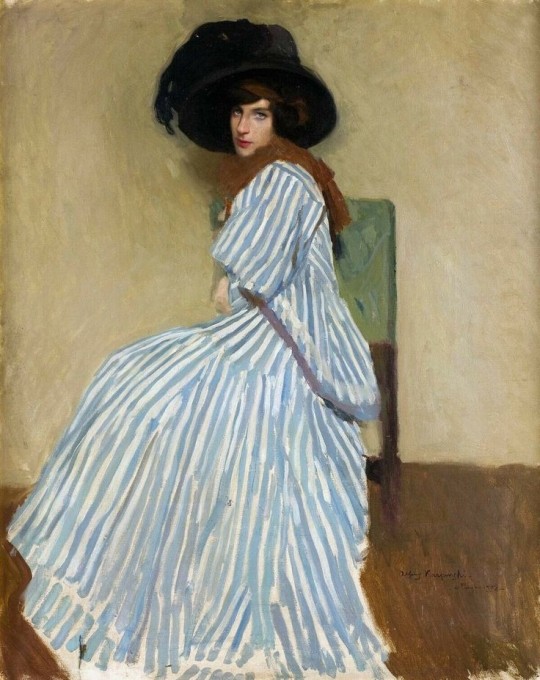
#art#fashion history#painting#edouard manet#impressionism#manet#renoir#victorian dresses#19th century summer dresses#mid 1800s blue striped dress#historic fashion#the resplendent outfit blog
44 notes
·
View notes
Text

Frank Weston Benson (1862-1951) "Summer" (1890) Oil on canvas Impressionism Located in the Smithsonian American Art Museum, Washington DC, United States
#paintings#art#artwork#allegorical painting#summer#frank weston benson#oil on canvas#fine art#american impressionism#impressionism#smithsonian american art museum#museum#art gallery#american artist#female portrait#portrait of a woman#allegory#purple#white dress#dresses#clothing#clothes#1890s#late 1800s#late 19th century
803 notes
·
View notes
Text
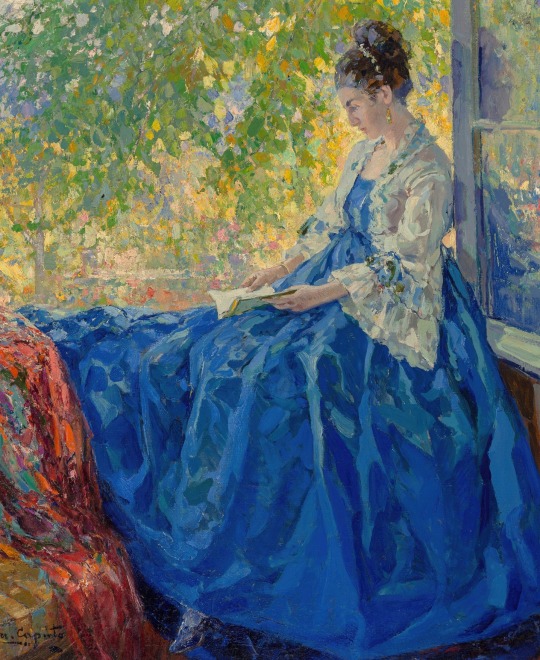
Young woman reading at an open window
Ulisse Caputo
#Ulisse Caputo#italian art#blue dress#blue#summer#art#painting#art history#fashion#portrait#nature#sunny day#19th century#20th century
276 notes
·
View notes
Text

Tintype of a picturesque pair perched atop a garden wall, c. 1890
#what a well-dressed couple!#though those tall starched collars have got to be hell in summer#19th century#1800s#1890s#19th century fashion#1890s fashion#fashion history#historical fashion#vintage men#19th century men#tintype#ferrotype#menswear
150 notes
·
View notes
Photo


Day Dress
c.1872
France
The 1870s was a period of marked romanticism and whimsy in fashionable dress. Much like the picturesque paintings of Renoir that depict such confectionary creations, both day and evening gowns were highly ornamented and often executed in delicate, feminine textiles. Though eveningwear was marked by décolleté necklines and lavish silk satins and taffetas, day dresses were made more modest with austere fabrics like cotton or wool. While many women owned walking and traveling dresses which afforded slightly greater moveability, also quite common was the summer day dress that was to be worn to an afternoon tea or reception. This garment, emblematic of warm weather day dresses of the period with its sheer printed cotton and delicate lace trim, is a particularly pristine example, and notable for its clear revival of eighteenth–century aesthetic sensibilites. The late nineteenth century, abetted by the luxury and progress of the Industrial Age, recalled distinctly, both in its textiles and in the etiquette that surrounded fashionable dress, the notorious material excesses of the third quarter of the eighteenth century. The wealthy classes of the late–nineteenth–century showed a particular respect for the formalities of fashion. While their garments were not nearly as ornamental and their entertaining circles not as elitist, the decorative effects of late nineteenth century afternoon reception dresses such as this one unarguably echoed the lavishness of the eighteenth–century gown, most notably here in the sleeve and neckline.
The MET (Accession Number: 2003.426a, b)
#fashion history#historical fashion#day dress#1870s#belle epoque#19th century#bustle era#1872#floral#summer#flower print#white#pink#france#the met#popular
1K notes
·
View notes
Photo


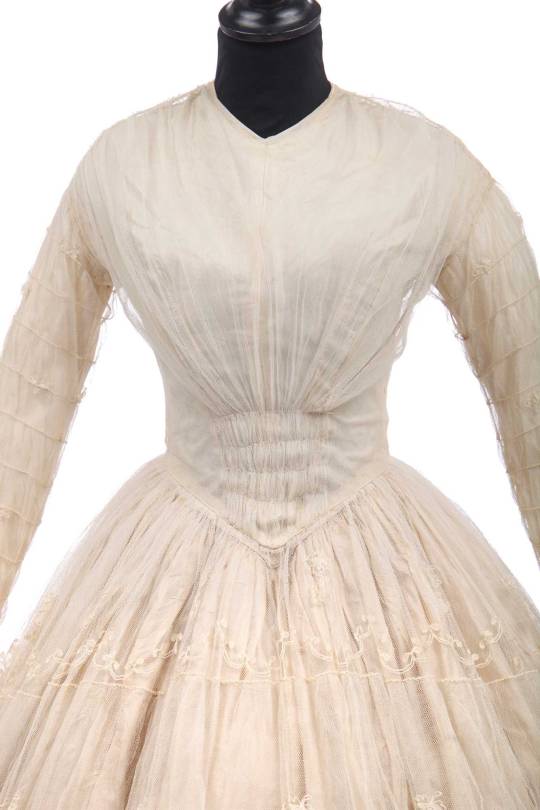
Wedding or summer dress, mid-1850′s
From Kerry Taylor Auctions
1K notes
·
View notes
Text


La Mode illustrée, no. 29, 19 juillet 1896, Paris. Toilette de visites brodée de paillettes. Toilette pour réunions d'été. Modèles de chez Mmes Coussinet-Piret, rue Richer, 43. Ville de Paris / Bibliothèque Forney
Toilette de visites, brodée de paillettes.
Cette robe en moire gris argent est brodée de paillettes et ornée de dentelle crème. La jupe est encadrée d'une broderie en paillettes noires; on pose sur le corsage entouré d'une haute ceinture drapée, un col brodé de paillettes. Le col retombe devant sur une haute dentelle, se prolongeant jusqu'aux entournures, et se termine au bord supérieur par un col droit et un grand nœud de dentelle. Les manches disposées en plis transversaux sont garnies d'une manchette de dentelle, et au bord supérieur, d'un bouillonné en moire, retenu par une ruche de dentelle, formant rosace sur les épaules.
This silver gray moire dress is embroidered with sequins and decorated with cream lace. The skirt is framed with black sequin embroidery; we place on the bodice surrounded by a high draped belt, a collar embroidered with sequins. The collar falls in front on high lace, extending to the edges, and ends at the upper edge with a straight collar and a large lace bow. The sleeves arranged in transverse folds are trimmed with a lace cuff, and at the upper edge, with a moire bubble, held in place by a lace ruffle, forming a rosette on the shoulders.
—
Toilette pour réunion d'été.
La jupe est faite en taffetas vert d'eau; le corsage, en gaze plissée de même couleur, est orné à l'ouverture de nœuds rosaces et de roses. Des rubans vert thé imprimés sur chaîne, partent des épaules devant et derrière en formant des bretelles jusqu'à la ceinture de même ruban; ils sont retenus par des roses, et retombent en longs pans. Manches courtes en gaze plissée.
The skirt is made of sea green taffeta; the bodice, in pleated gauze of the same color, is decorated at the opening with rosette knots and roses. Tea green ribbons printed on chain, start from the shoulders in front and behind forming straps up to the belt of the same ribbon; they are held by roses, and fall in long sections. Short sleeves in pleated gauze.
#La Mode illustrée#19th century#1890s#1896#on this day#July 19#periodical#fashion#fashion plate#description#Forney#dress#gigot#summer#Modèles de chez#Madames Coussinet-Piret#devant et dos
53 notes
·
View notes
Text
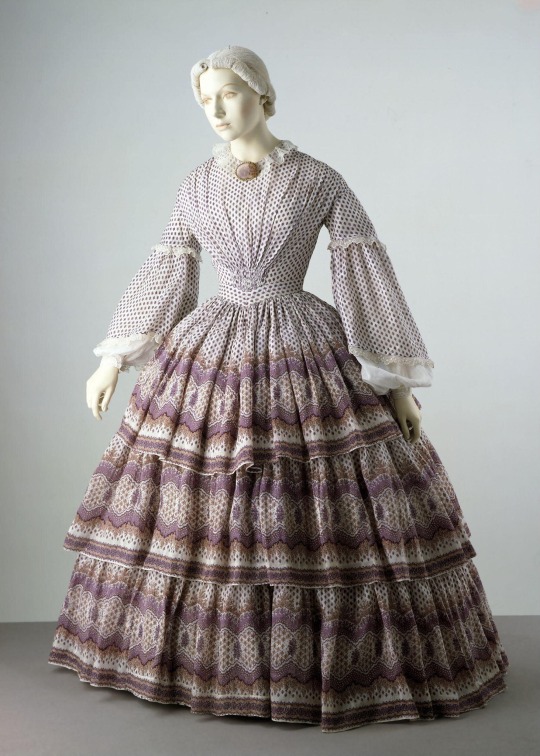
White and purple cotton day dress, 1858-1860, British.
Victoria and Albert Museum.
#white#cotton#purple#womenswear#extant garments#dress#19th century#britain#V&A#1858#1850s#1850s dress#1850s extant garment#1850s britain#summer
72 notes
·
View notes
Text




• Woman’s summer day dress.
Date: 1855-1858
Medium: Woodblock-printed cotton tabby
#fashion history#history of fashion#dress#fashion#19th century fashion#19th century#19th century dress#summer day dress#1855#1858
307 notes
·
View notes
Text

Women's Summer Dress, 20th June 1834.
Chapeau en paille de riz. Robe en Mousseline brodée.
Hat of rice straw. Dress of embroidered muslin.
#historical fashion#fashion plates#women's fashion#clothing#dress#19th century#century: 1800s#summer dress#year: 1834#day: 20th#date: 20 june 1834#month: june#decade: 1830s#summer#gown#pink#muslin#hat#bonnet#straw hat#accessories#era: romantic#era: georgian#era: july monarchy#nationality: french#publication: modes de paris#white#blue#op's favourites#colour illustration
7 notes
·
View notes
Text
Last time I went to the village to buy bread I saw a woman in the street who was dressed like a 19th-century peasant, complete with a thick old-timey accent with dialect words no one uses anymore—she was telling a little group of people to follow her so of course I had to drop everything and follow her too.
And it turned out she was a theatre actress who has read a lot of local archives in libraries and town halls, and offered her services to organise guided tours of various villages to tell people about local history in a fun way, by playing characters who lived here in the Middle Ages, the 19th century, or WWII. It's such a cool idea! I talked to her for a bit after the visit and she said she wasn't sure it'd work / attract enough people, but she had groups of tourists + local families show up for the visit every week, in every village where she did this, so she think she'll be hired again next summer.
When I joined their group she was talking about WWII, and how my & other nearby villages were known by the Nazis and Vichy as a hotbed of terrorists, with some Gestapo officers killed in bomb attacks. (In retaliation the Nazis eventually rounded up 100+ locals and deported them to camps, as well as shooting a few.) I was mostly familiar with WWII anecdotes from the North-East, where my grandparents lived during the war, and I found it funny how different they sounded—my grandfather made Resistance activities sound well-planned and careful (espionage, sabotage, underground presses, infiltrating railway services etc) while oral histories around here make them sound a lot more spontaneous and—handcrafted? like "Emile brought what we needed for the bomb in his wheelbarrow hidden under a layer of straw and we exploded 2 Nazis."
We then went to visit the former girls' school, and I learnt a lot about my country's history of education for girls! Also it was really sweet because there was an old lady in our group who had attended this school as a child and had lots of school memories to share. Most of them were very wholesome, until eventually our tour guide went "Surely you also have some School Mischief to tell us about" and the old woman at first was like no no no no, I was a good girl. And then she conceded that when she had to sort lentils for the nuns' dinner and she resented one of them for berating her in class, she'd do a shit job on purpose and leave some little stones in the lentils.
Then our last step was the fairground where the town fair was (and is still) held, and our tour guide told us little 19th-century anecdotes (in-character, more like acting them out) that she'd found in old postcards and letters in the archives—how the town fair was where you'd go for your dentist appointment (i.e. to have your bad teeth pulled with pliers with no pain medicine) and to get any object repaired, like damaged pans or clogs; how there were dancing bears and performing monkeys; how one year the merchant who sold linen for women's trousseaus had her linen display trampled "by 300 cows" (might have been an exaggeration) and she hit the cow herder and it started a massive brawl.
My favourite anecdote was how back in the 1800s the local innkeeper was frustrated by the fact that the nearest village is just 10km away, and people who came to the fair often decided to go spend the night there so their journey back the next day would be less long, and so he started to tell them about the beast that lives under the bridge between the two villages. Travellers say horses go mad when they see it and just jump into the water. Some say the beast has dug up corpses from the cemetery because it likes human flesh, though of course it prefers it fresh. I'm now convinced half of local legends were single-handedly created by business savvy innkeepers determined to get more customers than the rival inn 10km away.
I'm sad I only learnt about these visits at the end of summer when they're coming to an end, but I'll definitely follow this woman around again if she returns with more stories next year!
2K notes
·
View notes
Text
Monet's Luncheon on the Grass: The Dresses

Claude Monet • Le Déjeuner sur l'herbe (Luncheon on the Grass) • 1866-67 • Musée d'Orsay
Femmes au jardin is an oil painting begun in 1866 when Claude Monet was just 26 years old. It is a large work painted en plein air; the size of the canvas necessitated Monet painting its upper half with the canvas lowered into a trench he had dug, so that he could maintain a single point of view for the entire work. The setting is the garden of a property he was renting. His companion and future wife Camille Doncieux posed for the figures. Monet finished the work indoors, and used magazine illustrations to render fashionable clothing.
– Wikipedia

Detail


The dresses above look appropriate to the scene Monet painted. The fabrics are likely muslin, appropriately light for hot weather.


Luncheon on the Grass detail


A hat similar to the one the woman in the green striped dress has resting on her lap.
#art#fashion history#art history#victorian fashion#fine art#mid 19th century summer dresses#monet#claude monet#picnic#impressionism#french artist#women's fashion history#painting#the resplendent outfit blog
28 notes
·
View notes
Text
In Bloom: Mini-Regency Set

Hi, I have a miniset for you all which I've called ✨In Bloom✨, why you may ask? Because I couldn't think of any other name and my nirvana playlist was playing while making this...now proceeding to what you shall get:
You will be getting an Adult Female early 1820s formal/party dress, which was the first piece of cc I ever made last summer. I said I wasn't going to release it, however I've changed my mind. I used @peebsplays Sophia Dress, @gilded-ghosts Fanny dress, and some bows from @miikocc to make it. Here is the dress I was inspired by when making it from 1820, (It doesn't look like it but it that much was my first project sooo)

I'm sorry it only has 9 swatches and I can't seem to find the PSD I had for it. Otherwise, it's functioning and works for all body types.
Secondly, you will be getting a child regency dress, which is just a mesh edit of @peebsplays Caroline dress, and then I stuck my edited variation of @linzlu's Kirsten pantalettes onto it. Works for all body types and has 30 swatches.
Third, which is my favorite thing, child ringlets! I have struggled for the past few months trying to make accurate ringlets and I finally did it the other night. I used @the-melancholy-maiden's Caroline hair as a base, then used ringlets from @sixcirclescc's Serena Hair to paste and mirror around it. These ringlets are 18k poly, which is a bit high. Here is the little girl I was inspired by to make these ringlets, her name was either Pauline or Clementine so the ringlets are named Clementine Pauline. All natural swatches, minus the grays and salt and peppers because it's a child's hair.

I said they're regency for the sake of it but they can literally work for the vast majority of the 19th century, at least for the first and middle part of it.
Now, here are more pictures of everything in game, with and without my reshade from different angles.
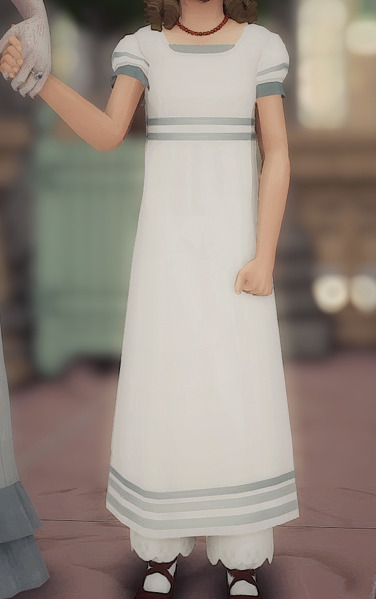

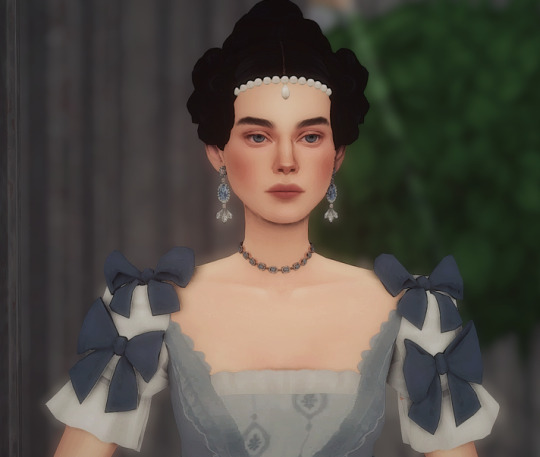
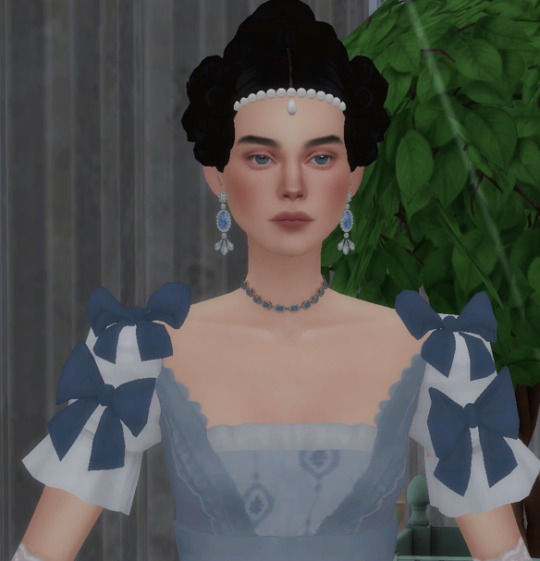

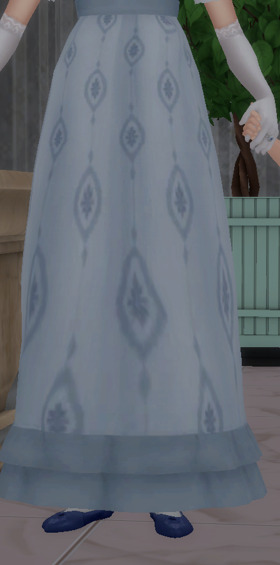

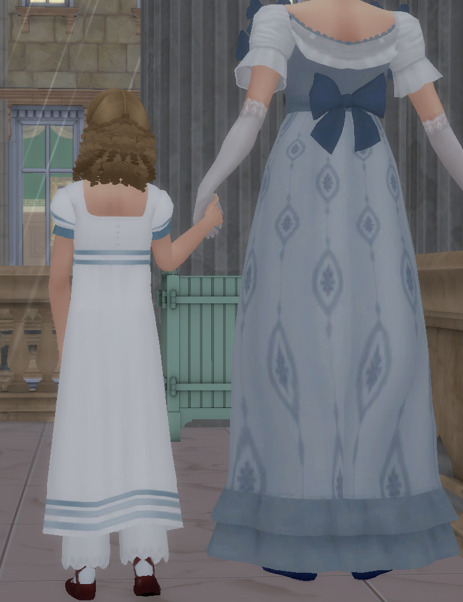

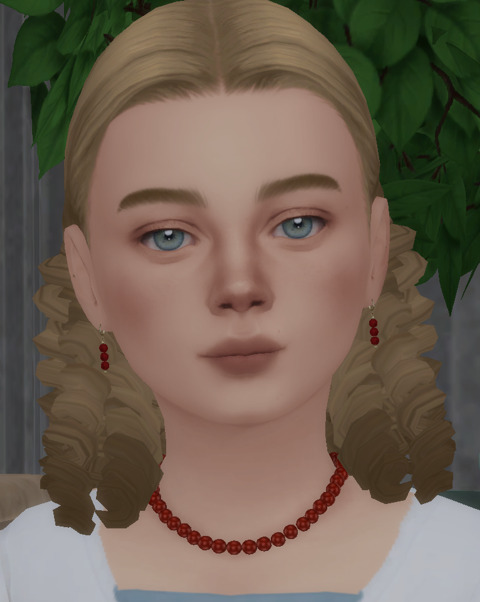




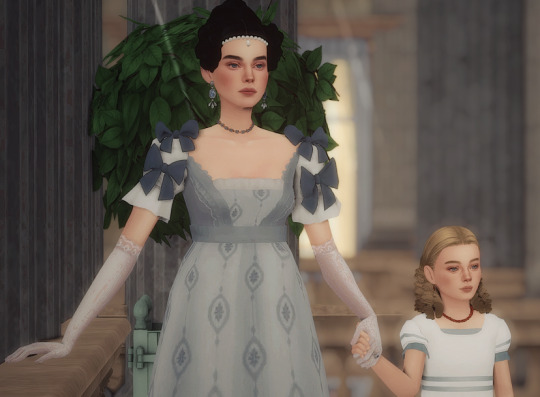
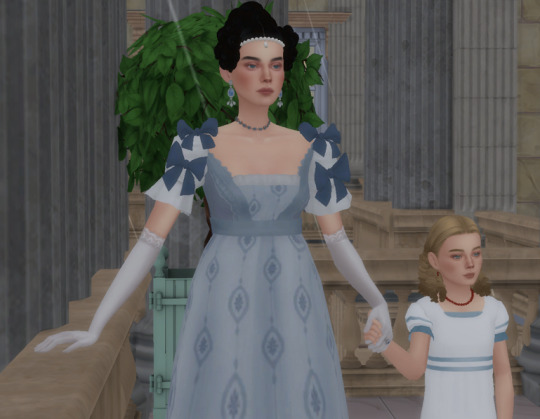
Annddd here are some 1810s/1820s portraits









Please read my TOU before downloading.
As always, let me know if you have any issues! @alwaysfreecc
DOWNLOAD
#sims 4 regency#regency ts4#ts4 regency#historical cc#regency sims 4#regency cc#sims 4 cc#historical sims 4#sims 4 historical#historical sims#my cc#ts4 cc#sims 4 bridgerton cc#sims 4 bridgerton
342 notes
·
View notes
Text
Mr. Darcy
logan howlett x fem!reader - halloween costumes, logan dresses up as Mr. Darcy, pride and prejudice fans rise up, fluff, cute, no use of y/n, no reader description.
It's Halloween and you make Logan dress up as Mr. Darcy.
a/n: It's October which basically means Happy Halloween. Here's a cute little Halloween one. God knows I love brooding men—and Mr.Darcy was the first one I can remember loving so why not combine logan and mr.darcy together.
read on Ao3
“You look—”
“Ridiculous,” Logan grunted before you could even finish. He stood there in the doorway, wearing the Regency-era costume you had begged him to wear for the Halloween party tonight—complete with the cravat, waistcoat, and fitted jacket that made him look every bit the brooding Mr. Darcy. His expression was a mixture of annoyance and resignation like he couldn’t believe he’d actually let you talk him into this.
If you were being honest, he didn’t look ridiculous. Not even close.
You bit back a smile as you took him in, the way the tailored jacket hugged his broad shoulders and how the crisp, white shirt contrasted with the usual ruggedness of his face. Somehow, Logan still managed to look like Logan —even when dressed up as Jane Austen’s most famous romantic hero.
“I was going to say handsome ,” you corrected, stepping closer to him with a teasing grin. “But if you prefer ridiculous…”
Logan huffed, adjusting the cravat at his throat like it was strangling him. “I don’t know how the hell you talked me into this,” he muttered, glancing at himself in the mirror, a deep scowl settling over his features. “I look like a damn fool.”
“You look perfect ,” you insisted, smoothing down the lapels of his jacket before placing your hands on his chest. “Like a brooding, 19th-century aristocrat. Which, let’s be honest, isn’t that far off from how you act sometimes.”
Logan narrowed his eyes at you, his gruff exterior barely masking the hint of amusement in his expression. “Very funny.”
You just grinned, standing on your tiptoes to press a soft kiss to his cheek. “Come on, Darcy. The party won’t be the same without you.”
Logan sighed, shaking his head but letting you lead him out of the room, your hand slipping into his as you made your way to the common area where the rest of the X-Men were already gathering for the Halloween party. The mansion was filled with the sounds of music, laughter, and general chaos that came with any event involving the team.
As you and Logan entered the room, it didn’t take long for people to notice.
Scott was the first to pipe up, nearly spitting out his drink when he saw Logan. “Holy crap, Logan, is that really you? I’ve never seen you look so… normal. ”
Jean chuckled beside him, nudging him with her elbow. “More like out of a BBC period drama. You’re practically unrecognizable.”
Logan’s scowl deepened as he shot Scott a glare. “You got somethin’ to say, Summers?”
“Oh, I think we all do,” Scott quipped, grinning as the rest of the team gathered around, taking in the rare sight of Logan dressed in something other than his usual leather jacket and flannel. “Seriously, who are you and what did you do with Wolverine?”
Even Storm, who was usually the voice of reason, couldn’t hide her amusement as she crossed her arms, giving Logan a once-over. “I didn’t think it was possible for you to look… refined.”
Logan grunted, clearly uncomfortable with the attention, but you couldn’t help but find the whole thing endearing. “Alright, alright, laugh it up,” he muttered, crossing his arms over his chest, which only made the fitted jacket strain against his broad frame. “Just remember—I’m still me underneath all this.”
That earned a round of laughs from the group, but you could see Logan trying his best to ignore the teasing. He was doing this for you, after all, and no amount of ribbing from the team was going to change that.
“I think you look amazing ,” you whispered, leaning into his side and giving him a reassuring smile. “You’re the best Mr. Darcy I’ve ever seen.”
Logan rolled his eyes, but there was a softness in his gaze when he looked down at you. “Yeah, well, I still don’t get why you’d want me dressed up as some stuck-up Brit,” he muttered, though his tone lacked its usual bite.
“Because you are Mr. Darcy,” you replied with a grin. “Gruff, brooding, a little rough around the edges—but with a heart of gold.”
Logan huffed a laugh, shaking his head. “I don’t know about the ‘heart of gold’ part.” You chuckled as he shook his head, clearly done with the entire situation. “You’re all gonna pay for this,” he muttered, his gruff tone tempered with the faintest hint of amusement as he pulled you closer to his side.
The party carried on, with the team eventually moving on to other conversations and teasing each other about their own costumes, but you couldn’t help but notice that Logan seemed quieter than usual. Not uncomfortable, exactly, but maybe a little... out of place.
Later that night, after most of the others had wandered off to different parts of the mansion, you and Logan found a quiet corner away from the noise, the dim lighting casting soft shadows across his face. He leaned against the wall, one hand resting casually in his pocket, the other holding a drink, still looking slightly out of his element in the period costume.
“You know,” you said, sidling up to him with a teasing smile, “for someone who’s not a fan of costumes, you’ve pulled off Mr. Darcy pretty well.”
Logan raised an eyebrow, his lips curving into a smirk. “Yeah? Glad one of us thinks so.”
You laughed softly, brushing your fingers over the lapel of his jacket. “You could’ve fooled me. You look like you stepped right out of Pride and Prejudice. All that’s missing is the declaration of undying love.”
Logan shot you a sideways glance, his expression unreadable for a moment. Then, to your surprise, he set his drink down and straightened up, clearing his throat awkwardly. “Undying love, huh?”
You raised an eyebrow, suddenly curious about where this was going. “Yep. The whole ��I admire and love you’ speech. It’s basically iconic.”
Logan’s eyes narrowed slightly, and for a moment, you thought he was about to make a sarcastic comment. But then, he took a step closer, his gaze locking onto yours with that intense, unreadable expression that always made your heart skip a beat.
“You must allow me,” Logan began, his voice low and gravelly, but there was something softer beneath the gruffness, something just for you, “to tell you how ardently I admire... and love you.”
Your breath caught in your throat as he said the words, his rough voice making the familiar line sound raw, real, Logan. It wasn’t perfect—it wasn’t polished or smooth like the Mr. Darcy of the novels—but that didn’t matter. It was him.
You stared at him, wide-eyed, a smile tugging at your lips. “Logan, did you just quote Mr. Darcy?”
He grunted, shifting his weight a little awkwardly. “I don’t know if I got it right. It’s what you wanted, though, wasn’t it?”
Your heart swelled, and without thinking, you closed the distance between you, cupping his face in your hands and kissing him, slow and soft, like it was the only way to say everything you felt.
When you finally pulled back, Logan’s eyes had softened, a quiet smile playing on his lips. “I’d do just about anything for you, even if it means wearing this ridiculous get-up.”
You smiled, resting your forehead against his. “Well, Mr. Darcy, I think you just made my night.”
Logan chuckled, pulling you into his arms, his lips brushing lightly against your temple. “Good. 'Cause I’m not wearin’ this again.”
#fluff#logan howlett#wolverine#logan howlett x you#x men wolverine#james logan howlett#x men logan#logan x reader#marvel#pride and prejudice#mr darcy#deadpool#deadpool and wolverine#worst logan x reader#worst logan#flufftober#halloween#logan wolverine#the wolverine#pride and predjudice 2005#one shot#hugh jackman#kate and leopold
162 notes
·
View notes
Note
Hello!
I am an aspiring author who struggles with accurately portraying historical clothing, and I stumbled across your blog while searching for photographs and information on late 19th century/USA Gilded Age fashion. From the research I've seen compiled across books/the internet, the clothing of the upper class from that area is very well documented in paintings, garment catalogues, photographs, museums, etc....but finding information on what the day-to-day wear of normal people was like is proving much more difficult. Since you seem to be knowledgeable in the subject of historical clothing in this approximate time period, I was wondering if you knew about any good resources to learn more about what people who couldn't afford to follow upper class trends were wearing in the general era as well as any general information around these items.
If it helps, I'm focused on eastern and southeastern United States farming/small railroad town/mountain mining/gulf coast wetland communities, but even just more general resources about what sort of clothing that the average poor person during the Gilded Age wore would be greatly helpful. I've been able to find a few photographs here and there, but these probably aren't an accurate depiction of a persons' 'day-to-day' wear, and I also haven't found much on how women learned to sew homemade clothes, what garments if any would have been bought, where people in rural areas would have sourced their cloth, what undergarments were like, how work shoes were made & aquired, ect.
Please feel free to ignore this if it isn't something you're interested in answering as I'm sure you get a lot of asks, but I'd greatly appreciate it if you have any pointers!
So here's the thing about 19th-century clothing:
in many ways, it's the same all the way down
now, that's a serious generalization. is a farm wife in Colorado going to be wearing the same thing as a Vanderbilt re: materials, fit, and up-to-the-minute trendiness? obviously not. but because so much of what people wore back then has only survived to the present day in our formalwear- long skirts, suits, etc. -we tend to have difficulty recognizing ordinary or "casual" clothing from that period. I also sometimes call this Ballgownification, from the tendency to label literally every pretty Victorian dress a Ball Gown (even on museum websites, at times). Even work clothing can consist of things you wouldn't expect to be work clothing- yes, they sometimes worked in skirts that are long by modern standards, or starched shirts and suspenders. Occupational "crap job clothes" existed, but sometimes we can't recognize even that because of modern conventions.
A wealthy lady wore a lot of two-piece dresses. Her maid wore a lot of two-piece dresses. The trailblazing lady doctor working at the hospital down the road from her house wore a lot of two-piece dresses. The factory worker who made the machine lace the maid used to trim her church dress wore a lot of two-piece dresses. The teenage daughter of the farm family that raised the cows that supplied the city where all those people lived wore a lot of- you get the idea. The FORMAT was very similar across most of American and British society; the variations tended to come in fabrics, trims, fit precision, and how frequently styles would be updated.
Having fewer outfits would be common the further down the social ladder you went, but people still tried to have as much underwear as possible- undergarments wicked up sweat and having clean ones every day was considered crucial for cleanliness. You also would see things changing more slowly- not at a snail's pace, but it might end up being a few years behind the sort of thing you'd see at Newport in the summer, so to speak. Underwear was easier to make oneself than precisely cut and fitted outer garments for adults (usually professionally made for all but the poorest of the poor for a long time- dressmakers and tailors catering to working-class clientele did exist), but that also began to be mass-produced sooner than outer clothing. So depending on the specific location, social status, and era, you might see that sort of thing and children's clothing homemade more often than anything else. Around the 1890s it became more common to purchase dresses and suits ready-made from catalogues like Sears-Roebuck, in the States, though it still hadn't outpaced professional tailoring and dressmaking yet. Work shoes came from dedicated cobblers, and even if you lived in isolated areas, VERY few people in the US and UK wove their own fabric. Most got it from the nearest store on trips to town, or took apart older garments they already had to hand and reused the cloth for that.
I guess the biggest thing I want to emphasize is that, to modern eyes, it can be very hard to tell who is rich and who is anywhere from upper-working-class to middling in Gilded Age photographs. Because just like nowadays a custodial worker and Kim Kardashian might both wear jeans and a t-shirt, the outfit format was the same for much of society.
Candid photography can be great for this sort of thing:

Flower-sellers in London's Covent Garden, 1877. Note that the hat on the far right woman is only a few years out-of-date; she may have gotten it new at the time or from a secondhand clothing market, which were quite popular on both sides of the Atlantic.
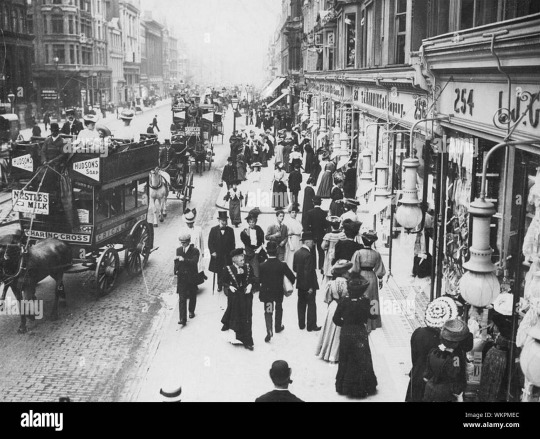
Also London, turn of the 20th century.

A family in Denver, Colorado, c. early 1890s.

Train passengers, Atlanta, Georgia, probably 1890s.
Hope this helps!
#ask#anon#long post#dress history#clothing history#fashion history#one of my friends once said 'most stuff made by historical costumers online isn't out of the question for a maid on her day off'#'or a middle-class wife'#and they're so right#it just ALL looks Fancy to modern eyes
105 notes
·
View notes
Text

Algy flew a short distance downstream, to a quiet spot where the burn trickled peacefully through a wee level channel it had carved for itself on its meandering journey to the sea.
The moorland was dressed in all its autumn splendour now, displaying its finest colours of the year in a jubilant burst before it rested through the darkest months of the year. Algy had never much cared for the brash greens of the short-lived Highland summer, and in the depths of winter the land too often looked drained of colour entirely, clothed only in washed-out browns and dirty greys. But in October it came into its glory, especially when the sun broke through after a period of rain.
Surrounded by the invigorating fragrance of bog myrtle, which rose from the wee bush on which he had found a perch, Algy contemplated the beauty of the landscape, reflecting that those dreary poets and writers who had likened autumn to a period of decay and death must have been blind indeed, both literally and metaphorically, for not only was the fall of the year magnificent in itself, but it invariably ended in a comforting period of rest and joyful festivities before leading once again into another beautiful and uplifting spring…
It’s all a farce,—these tales they tell About the breezes sighing, And moans astir o’er field and dell, Because the year is dying. Such principles are most absurd,— I care not who first taught ’em; There’s nothing known to beast or bird To make a solemn autumn. In solemn times, when grief holds sway With countenance distressing, You’ll note the more of black and gray Will then be used in dressing. Now purple tints are all around; The sky is blue and mellow; And e’en the grasses turn the ground From modest green to yellow. The seed burrs all with laughter crack On featherweed and jimson; And leaves that should be dressed in black Are all decked out in crimson. A butterfly goes winging by; A singing bird comes after; And Nature, all from earth to sky, Is bubbling o’er with laughter. The ripples wimple on the rills, Like sparkling little lasses; The sunlight runs along the hills, And laughs among the grasses. The earth is just so full of fun It really can’t contain it; And streams of mirth so freely run The heavens seem to rain it. Don’t talk to me of solemn days In autumn’s time of splendor, Because the sun shows fewer rays, And these grow slant and slender. Why, it’s the climax of the year,— The highest time of living!— Till naturally its bursting cheer Just melts into thanksgiving.
[Algy is quoting the poem Merry Autumn by the late 19th century African American poet Paul Laurence Dunbar, whose parents were both emancipated slaves and who was one of the very first African American writers to achieve recognitions and success.]
#Algy#photographers on tumblr#photography#scotland#landscape#writers on tumblr#Scottish landscape#Scottish Highlands#autumn#fall#fall colours#merry autumn#paul laurence dunbar#african american poets#moorland#burn#stream#colour#autumn colours#happiness#relaxation#climax of the year#thanksgiving#adventures of algy#original content#jenny chapman
62 notes
·
View notes